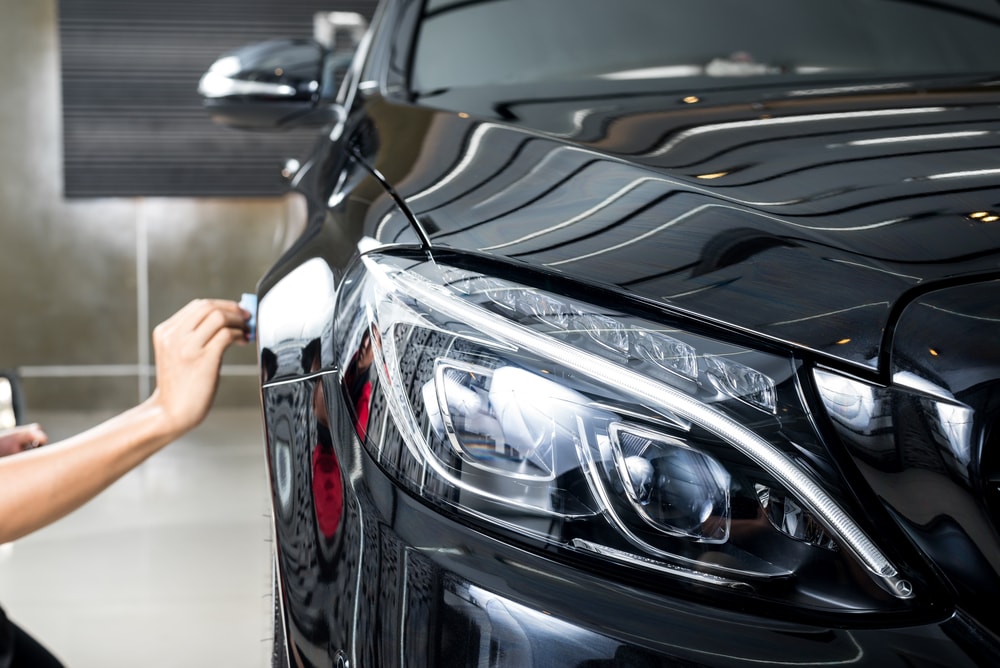Specialist Ceramic Coatings San Jose for Superior Gloss and Resilience
Specialist Ceramic Coatings San Jose for Superior Gloss and Resilience
Blog Article
Unveiling the Science Behind Ceramic Coatings: How Does It Job and Why Is It Above Typical Options?
Ceramic finishings have been getting popularity in various industries for their exceptional efficiency and toughness. Comprehending how ceramic finishes work and why they surpass conventional options is critical for those seeking to improve the longevity and strength of their materials.
The Chemistry of Ceramic Coatings
In understanding ceramic coverings, diving into the intricate chemistry behind their make-up is essential for grasping their functionality and resilience. Ceramic coverings are mainly made up of silicon dioxide (SiO2), which creates a protective and solid layer when used to different surfaces. This chemical framework gives extraordinary resistance to warm, chemicals, and deterioration, making ceramic coverings extremely demanded for a wide variety of applications.
The chemistry behind ceramic coatings involves the development of covalent bonds in between silicon and oxygen atoms, developing a stiff network that boosts the finishing's durability and longevity. In addition, the presence of other components such as light weight aluminum, titanium, and zirconium additional enhances the covering's properties, offering boosted firmness and adhesion to surfaces.
Understanding the chemical composition of ceramic layers permits the personalization of formulas to suit particular needs, whether it be for automotive, commercial, or domestic objectives. By harnessing the power of chemistry, ceramic coverings remain to lead the way for exceptional security and efficiency in numerous markets.
Benefits of Ceramic Coatings

As a result, ceramic coverings make cleansing and keeping surfaces much easier and less lengthy. Generally, the plethora of benefits supplied by ceramic finishes make them a superior option compared to traditional layer techniques.
How Ceramic Coatings Bond
Ceramic finishings bond to surfaces with a procedure that involves molecular attachment and chemical interactions. When a ceramic finish is applied to a surface, it develops a strong bond by chemically sticking to the surface at a molecular degree.
Additionally, the chemical interactions in between the ceramic finishing and the surface area additionally boost the bond. ceramic coatings san jose. These interactions allow the ceramic layer to develop a constant and smooth layer externally, providing excellent protection and longevity. Unlike conventional finishings that might rest on the surface area without completely bonding, ceramic finishings create a permanent bond that is immune to chemicals, UV rays, and harsh ecological problems

In significance, the bonding device of ceramic coatings makes sure a lasting and effective protective layer that outshines standard finish options. This remarkable bond contributes to the durability, scrape resistance, and long life of ceramic finishings, making them a preferred option for different applications.
Sturdiness of Ceramic Coatings
The outstanding long life of ceramic coatings stems from their durable molecular attachment and chemical communications with surface areas, making certain a resilient safety layer that exceeds conventional finish next options. As soon as applied, ceramic finishes create a solid bond with the substratum, developing a resilient barrier against numerous environmental stress factors such as UV radiation, chemicals, and abrasions. This bond is so secure that it can hold up against the rigors of day-to-day use without weakening or deteriorating swiftly.
Unlike standard layers that may weaken over time, ceramic finishes maintain their stability for an extensive duration, giving long-lasting protection for the underlying surface. On the whole, the outstanding longevity of ceramic layers makes them an exceptional selection for securing a wide array of surfaces in various applications.
Ceramic Coatings Vs. Standard Options
In contrast to traditional coating methods, ceramic coverings offer a distinctive mix of durability and protective capacities that set them apart in different surface protection applications. Conventional alternatives such as wax or sealants provide a short-term layer of protection that can wear away rapidly, requiring frequent reapplication. On the various other hand, ceramic coverings create a strong bond with the surface area, producing a semi-permanent or permanent barrier that is highly resistant to abrasion, chemicals, UV rays, and extreme temperatures.
In addition, ceramic finishings use remarkable hydrophobic residential or commercial properties compared to typical layers. The hydrophobic nature of ceramic coatings creates water to grain up and roll off the surface area, carrying dust and pollutants with it. This self-cleaning impact assists to preserve the surface's tidiness and gloss get redirected here for extended durations, reducing the requirement for regular upkeep.
Additionally, ceramic finishes have a thicker layer contrasted to typical alternatives, providing weblink boosted scratch resistance and protection versus small effects. This resilience ensures durable performance and aids protect the aesthetic allure of the dealt with surface area for an extensive period.
Conclusion
To conclude, the science behind ceramic coverings lies in their chemical make-up and bonding buildings, making them above typical options. The advantages of ceramic finishings consist of increased longevity and protection for surfaces. By understanding just how ceramic layers job and their advantages over typical options, one can make educated decisions when thinking about finish choices for numerous applications.
Unlike traditional coatings that might sit on the surface area without completely bonding, ceramic coatings develop a permanent bond that is resistant to chemicals, UV rays, and extreme ecological conditions.
The extraordinary long life of ceramic coverings stems from their robust molecular attachment and chemical interactions with surfaces, guaranteeing a resilient protective layer that goes beyond conventional covering choices.Unlike traditional finishings that may break down over time, ceramic coverings preserve their honesty for a prolonged duration, providing lasting protection for the underlying surface.In contrast to conventional layer techniques, ceramic finishes use an unique mix of durability and safety abilities that set them apart in various surface security applications. By recognizing how ceramic finishes work and their advantages over conventional alternatives, one can make educated decisions when thinking about layer choices for numerous applications.
Report this page